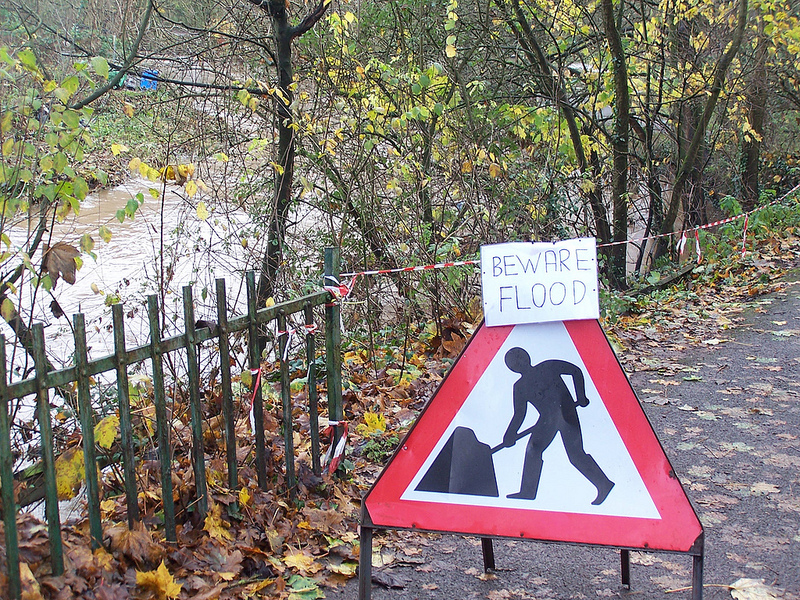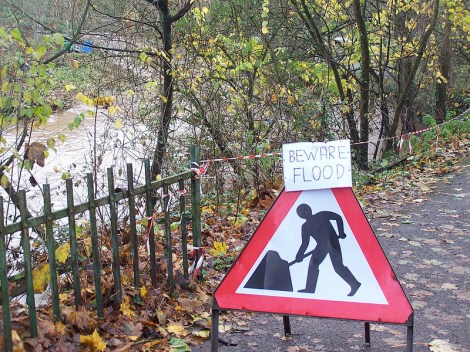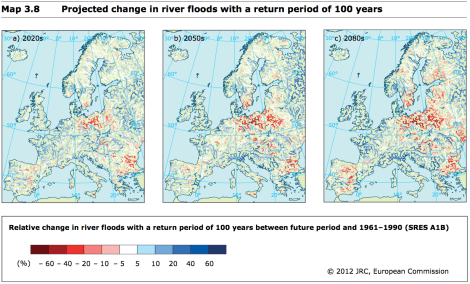Last week’s E.U. report on anticipated effects of climate change made one point clearly: The United Kingdom can expect to see a lot more flooding. In case the Brits didn’t read the report, Mother Nature decided to make that point directly.
http://www.newslook.com/videos/516590-floods-spread-across-uk
From the Capital Weather Gang:
A weather double whammy has smacked the United Kingdom (UK) with flooding rain and powerful winds. The first wave struck this weekend, with the follow-up blow [Sunday] night into [Monday].
The storm that struck over the weekend was the more powerful of the two. The BBC reports more than 800 homes were flooded by the storm in England and Wales, and two people were killed. The worst weather was focused in South West England. The UK Met Office reports 40-60 mm of rain (1.5-2.5 inches) were common through Sunday morning while wind gusts reached 55-70 mph Saturday night. Prime Minister David Cameron described “shocking scenes of flooding” in Cornwall where rainfall reached 3.7 inches according to AccuWeather.
There are any number of photo galleries of those “shocking scenes,” including this one of an elderly man being rescued from his car. Both The Guardian and the BBC had live blogs reporting damage, rescues, and anticipated further flooding. Britain’s Environment Agency has a map of flood warnings that it has updated regularly over the past few days.
Even before the waters have stopped rising (northern England and Wales are being drenched today; one river has already overflowed its levees), the inevitable debate has arisen: How will these floods affect insurance costs?
Businessweek reports that the estimated damage could top $800 million. According to the Daily Mail (so: grain of salt), homes in high-risk areas may no longer be considered insurable.
Under a previous deal, most homes which will never experience floods pay a ‘small sum’ on their insurance premiums to subsidise cover for high-risk homes.
But this is due to expire next year. …
If no new agreement is reached, households in flood-risk areas would be left at the mercy of the market and around 200,000 homeowners would not be able to secure or afford any insurance at all leaving them unable to sell or re-mortgage their homes.
The U.S. debated this same topic over the summer, eventually deciding to increase flood insurance rates after years of rates so low that the National Flood Insurance Program ran at a deficit. (In the aftermath of Sandy, the program will likely need an additional infusion of funding to pay out claims.) Higher insurance rates have two benefits: They allow the program to better pay for itself and, more importantly, act as a disincentive to build in areas that are more likely to be flooded.
As we noted last week, these maps show how climate change over the next 90 years will affect the U.K. — far more “100 year” floods, like those that are right now swamping the country.
There will be a cost paid. The only question: Will it be paid on the front end in cash or on the back end in much more cash — and lives?





